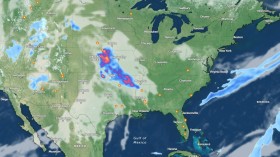Recent incidents of tourists harassing sea lions became the reason why a popular beach in San Diego will be shut down for seven years.
Harassment of Sea Lions in Some San Diego Beaches
San Diego will be closing one of its crowd-favorite beaches for seven years following numerous unfavorable encounters between people and sea lions.
According to a statement from the city, the San Diego City Council on Monday overwhelmingly approved the year-round closure of Point La Jolla and some of the nearby Boomer Beach until 2030.
According to the city, the new regulation amends an earlier permission that prohibited beachgoers from using it from May to October during "pupping season," when mothers and their young sea lion pups bond, nurse, and learn how to swim.
The California Coastal Commission backed the proposal earlier this year.
According to the city's statement, the closure was implemented to safeguard both beachgoers and sea lions.
According to the statement, people have been seen attempting to touch, take selfies with, and get as near to sea lions as they can. Not only are these interactions risky for both people and wildlife, but they can also be against the federal Marine Mammal Protection Act.
Misbehaved Tourists
Since sea lions often give birth on islands or close to remote cliffs, La Jolla, a wildlife hotspot, is a somewhat uncommon location for pupping.
The region is well known for its sea lion population because it offers rocky ledges, beaches, and an abundance of prey in the nearby underwater canyons.
Additionally, the fact that the creatures are publicly visible makes for occasionally disastrous interactions between people and sea lions.
A sea lion pup at La Jolla Cove perished in 2021 after being repeatedly hurt by waves crashing against the rocks while being backed onto a cliff by a group of people.
A visitor was reportedly spotted kicking the sea lions to persuade the animals to lift their heads for a photo, while a Sierra Club docent described the beach scene as "chaos."
The decision by the city council comes after a difficult summer for sea lions. The effects of a poisonous algal bloom, which led to unexpected behavior and death among sea lions in southern California, were devastating in addition to the ongoing harassment from tourists and beachgoers.
Also Read: Malama Hawaiian Monk Seal Killer Bounty at $5000 -NOAA
Sea Lions
The California sea lion and the Steller sea lion are two examples of sea lions in the pinniped family that have external ear flaps. This group also consists of some endangered fur seals like the Guadalupe fur seal.
In the water, sea lions move themselves by paddling using their front flippers while using their rear flippers to help steer, like a boat's rudder. On land, they utilize their huge, elongated front flippers along with rear flippers rotated underneath their bodies to "walk."
When hauled out together on sandy beaches, offshore rocks, and occasionally man-made structures like jetties and piers, sea lions can be boisterous and are easily identified by their loud and unmistakable "bark." They frequently assemble in huge groups called "herds" or "rafts."
Related Article: Endangered Mediterranean Monk Seal Yulia Seen Sunbathing on Tel Aviv Shores
© 2024 NatureWorldNews.com All rights reserved. Do not reproduce without permission.


![Roundworms with Short Memories 'Stop Forgetting' When Frozen or Given Lithium [Study]](https://1471793142.rsc.cdn77.org/data/thumbs/full/70295/280/157/50/40/roundworms-with-short-memories-stop-forgetting-when-frozen-or-given-lithium-study.jpg)


